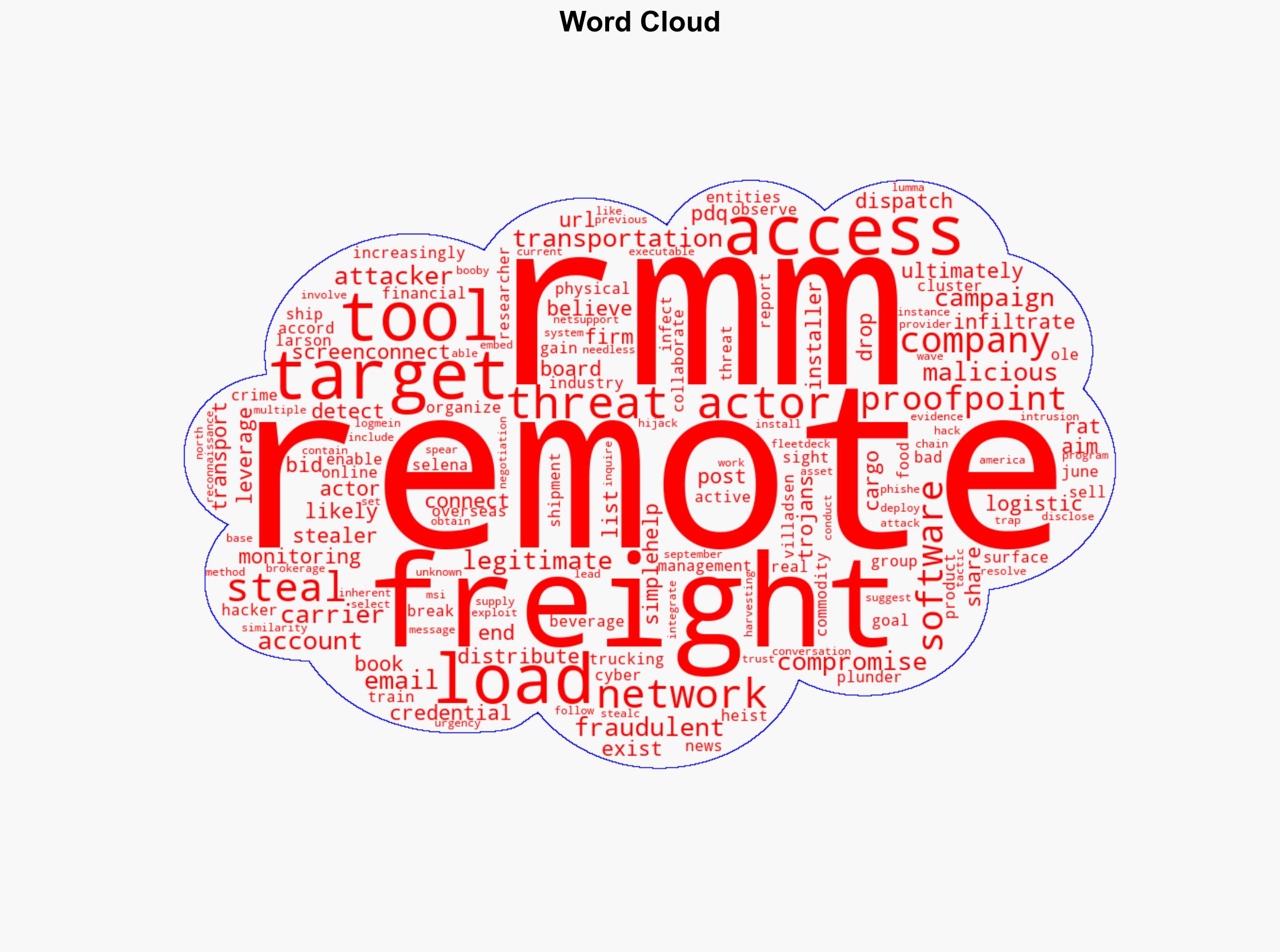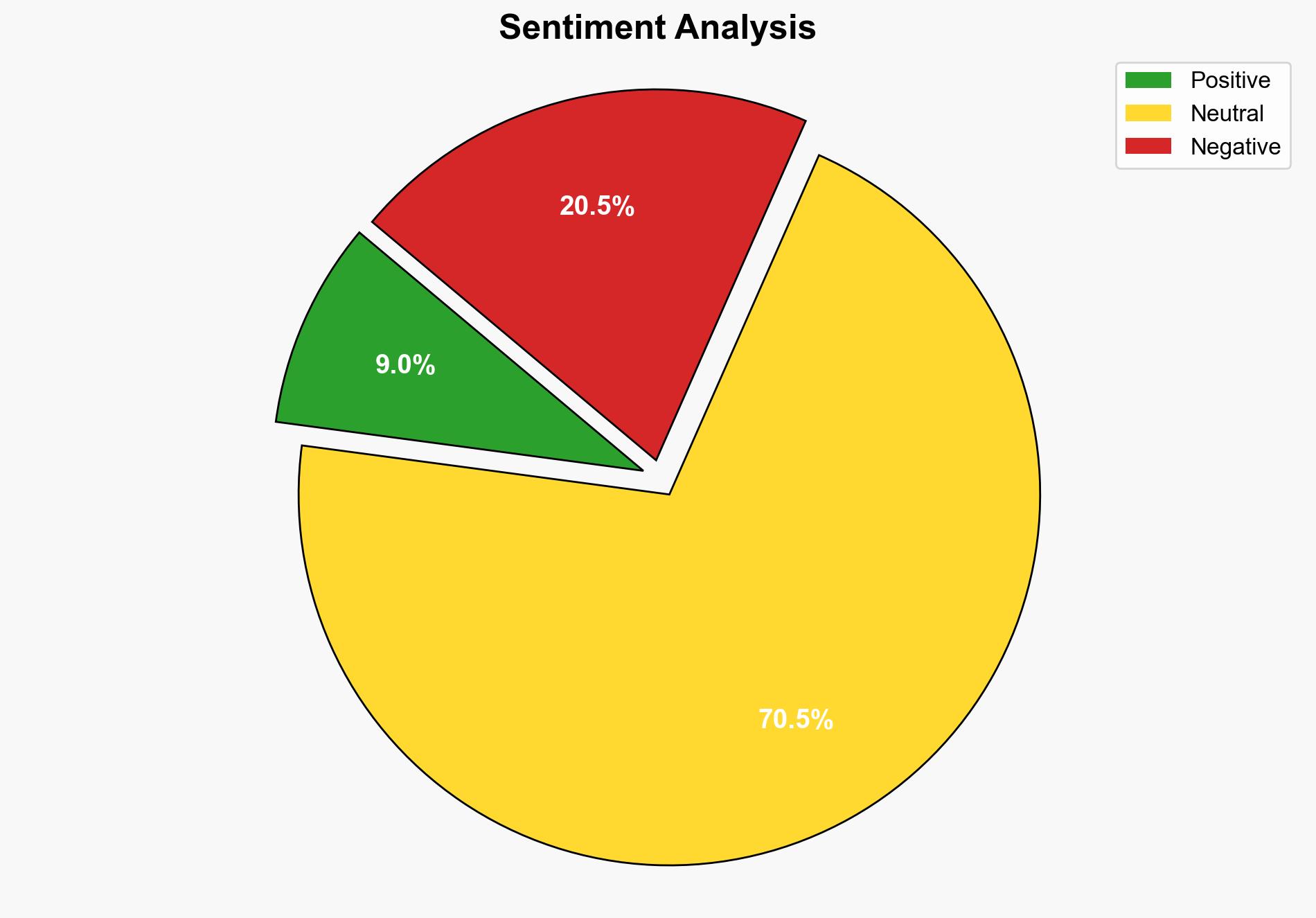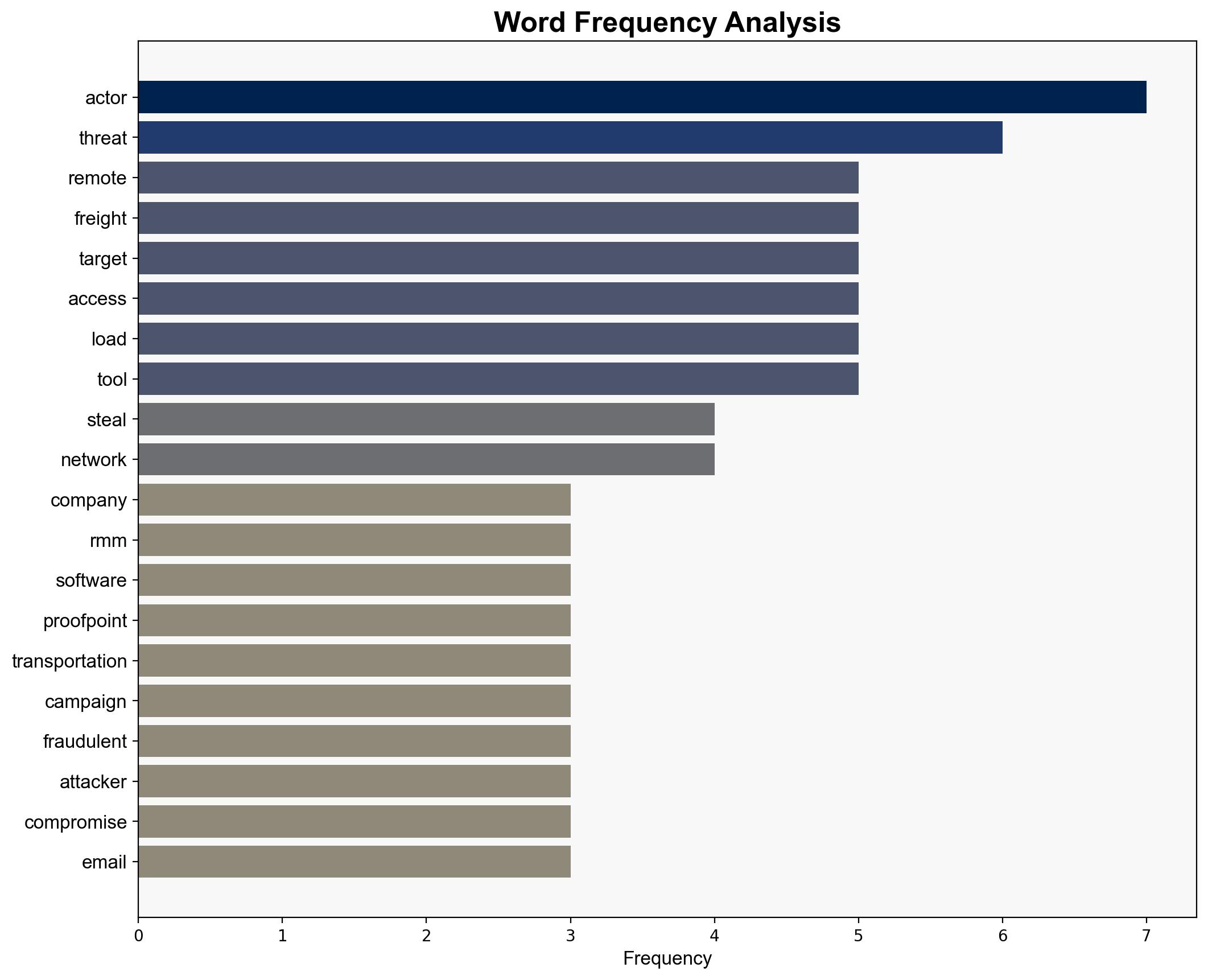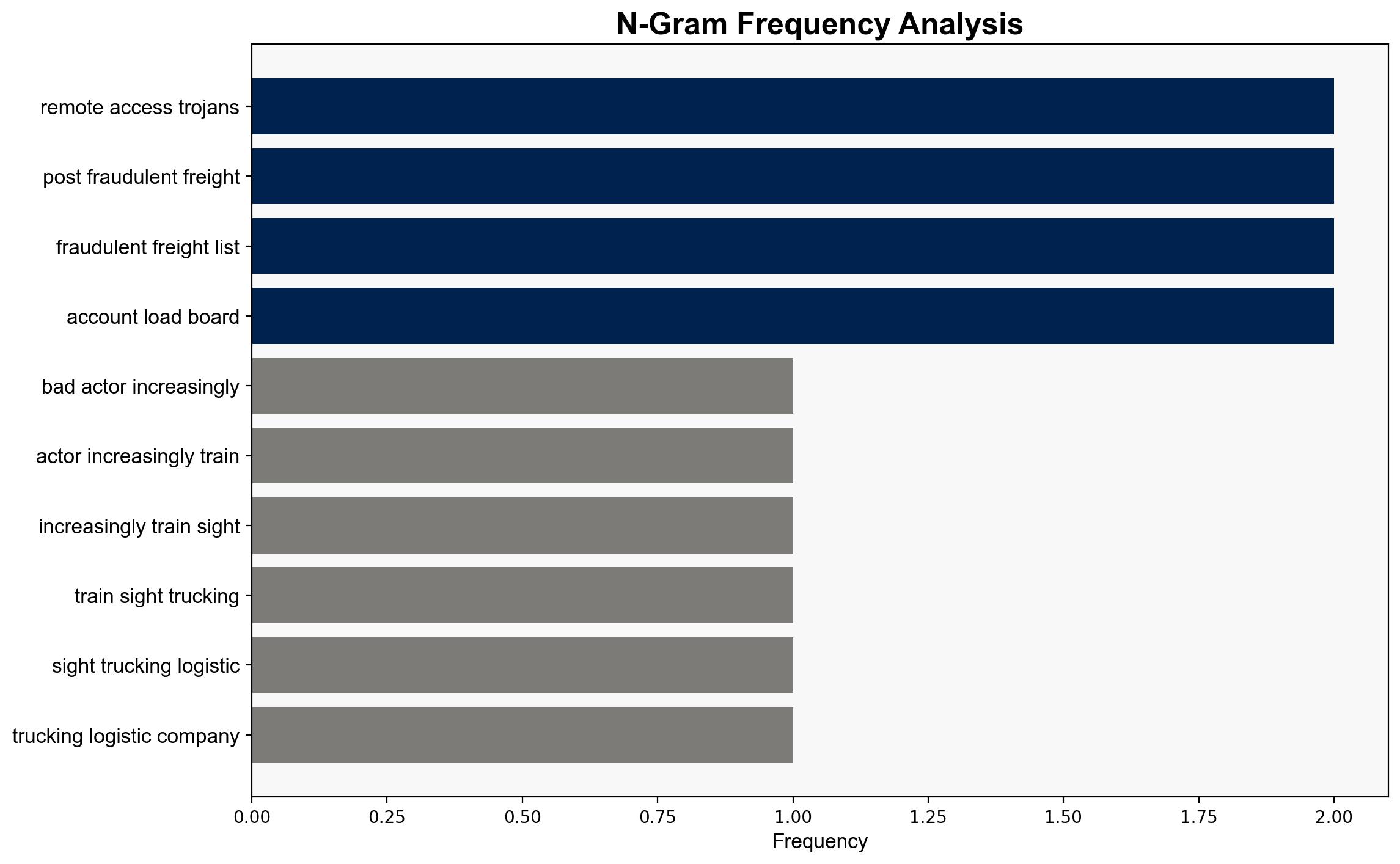Cybercriminals Exploit Remote Monitoring Tools to Infiltrate Logistics and Freight Networks – Internet
Published on: 2025-11-03
Intelligence Report: Cybercriminals Exploit Remote Monitoring Tools to Infiltrate Logistics and Freight Networks – Internet
1. BLUF (Bottom Line Up Front)
The most supported hypothesis is that cybercriminals are leveraging legitimate remote monitoring and management (RMM) tools to conduct targeted cyber-enabled heists within the logistics and freight sector. This approach allows them to bypass traditional security measures, facilitating the theft of physical goods. Confidence in this hypothesis is moderate, given the evidence of similar past campaigns and the strategic use of RMM tools. Recommended actions include enhancing cybersecurity protocols, particularly around RMM tools, and increasing awareness and training within the logistics industry to recognize and counteract these threats.
2. Competing Hypotheses
1. **Hypothesis A**: Cybercriminals are using RMM tools to infiltrate logistics networks with the primary goal of stealing cargo, leveraging these tools to avoid detection and facilitate the theft of physical goods.
2. **Hypothesis B**: The use of RMM tools is a diversion tactic, with the primary objective being the theft of sensitive data and intellectual property, rather than physical goods.
Using the Analysis of Competing Hypotheses (ACH) 2.0, Hypothesis A is better supported due to the alignment of observed tactics with known objectives of stealing and selling physical goods online. The pattern of attacks and the specific targeting of logistics companies further support this hypothesis. Hypothesis B lacks direct evidence in the current data set.
3. Key Assumptions and Red Flags
– **Assumptions**: It is assumed that the primary motivation is financial gain through the theft of physical goods. Another assumption is that the use of legitimate RMM tools is primarily for evasion of security measures.
– **Red Flags**: The possibility of underestimating the sophistication of the attackers and the potential for broader objectives, such as data theft, remains a concern. Additionally, the reliance on historical patterns may overlook novel tactics.
– **Blind Spots**: Limited information on the full scope of the attackers’ capabilities and potential collaboration with insider threats.
4. Implications and Strategic Risks
The exploitation of RMM tools poses a significant risk to the logistics sector, potentially leading to substantial economic losses and disruptions in supply chains. If successful, these attacks could embolden further cybercriminal activity, increasing the frequency and sophistication of future attacks. There is also a risk of cascading effects on related industries and potential geopolitical tensions if international shipping routes are affected.
5. Recommendations and Outlook
- Enhance cybersecurity measures specifically targeting RMM tools, including stricter access controls and monitoring for unusual activity.
- Conduct industry-wide training sessions to improve awareness and detection of phishing and other social engineering tactics.
- Establish a collaborative information-sharing platform among logistics companies to quickly disseminate threat intelligence.
- Scenario Projections:
- Best Case: Improved security measures lead to a significant reduction in successful cyberattacks.
- Worst Case: Continued exploitation results in widespread disruptions and financial losses.
- Most Likely: Incremental improvements in security reduce attack success rates but do not eliminate the threat entirely.
6. Key Individuals and Entities
– Ole Villadsen
– Selena Larson
– Proofpoint (as a research entity)
7. Thematic Tags
national security threats, cybersecurity, counter-terrorism, regional focus





